先自我介绍一下,小编浙江大学毕业,去过华为、字节跳动等大厂,目前阿里P7
深知大多数程序员,想要提升技能,往往是自己摸索成长,但自己不成体系的自学效果低效又漫长,而且极易碰到天花板技术停滞不前!
因此收集整理了一份《2024年最新网络安全全套学习资料》,初衷也很简单,就是希望能够帮助到想自学提升又不知道该从何学起的朋友。
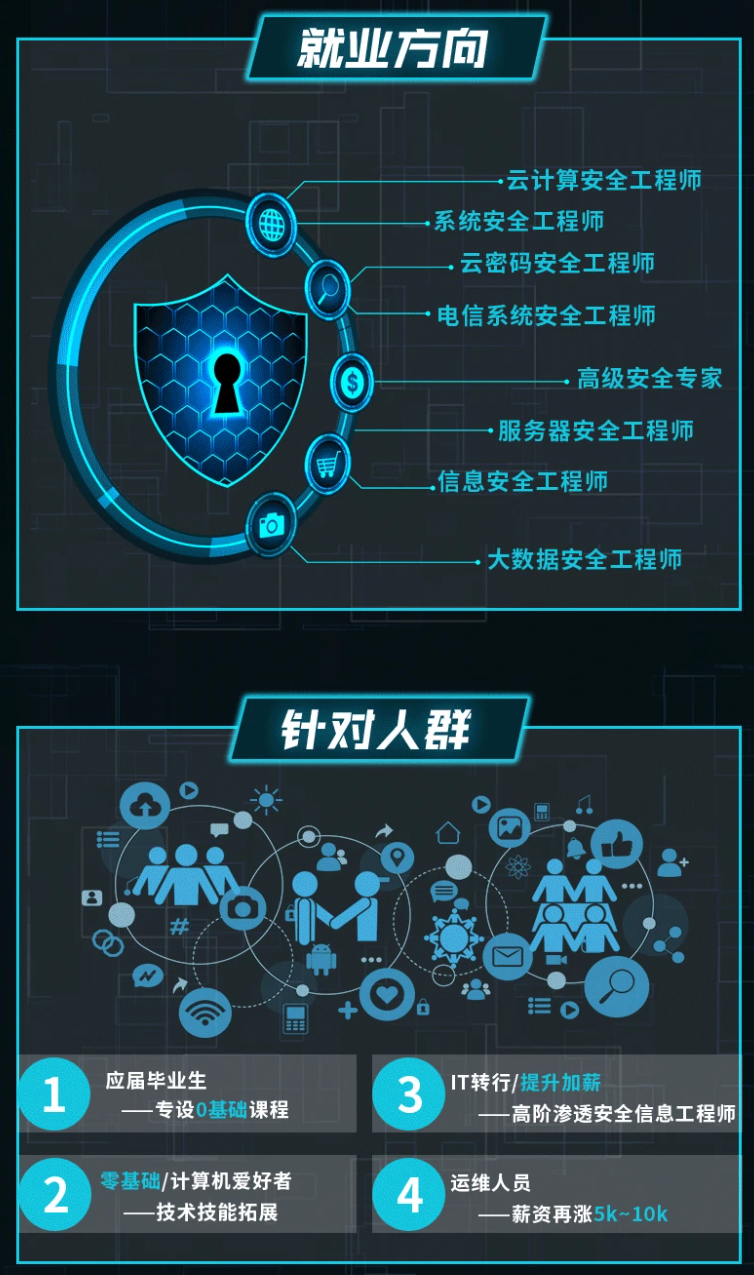
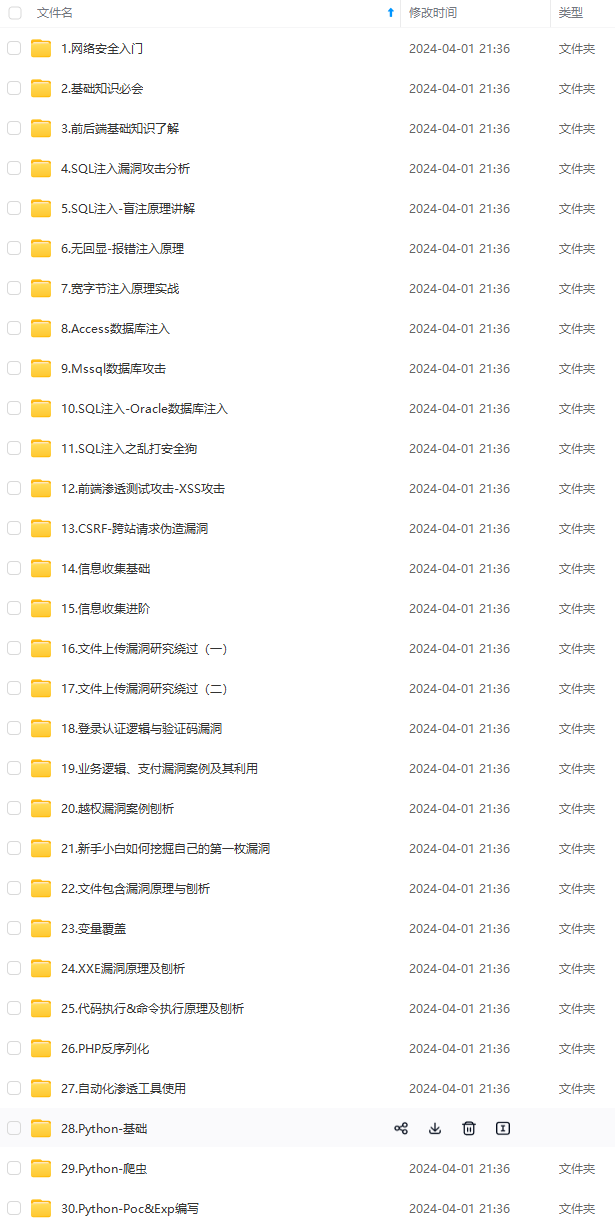
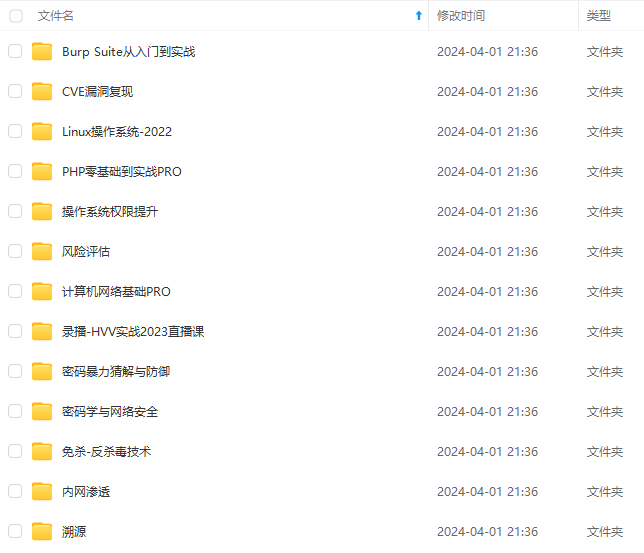

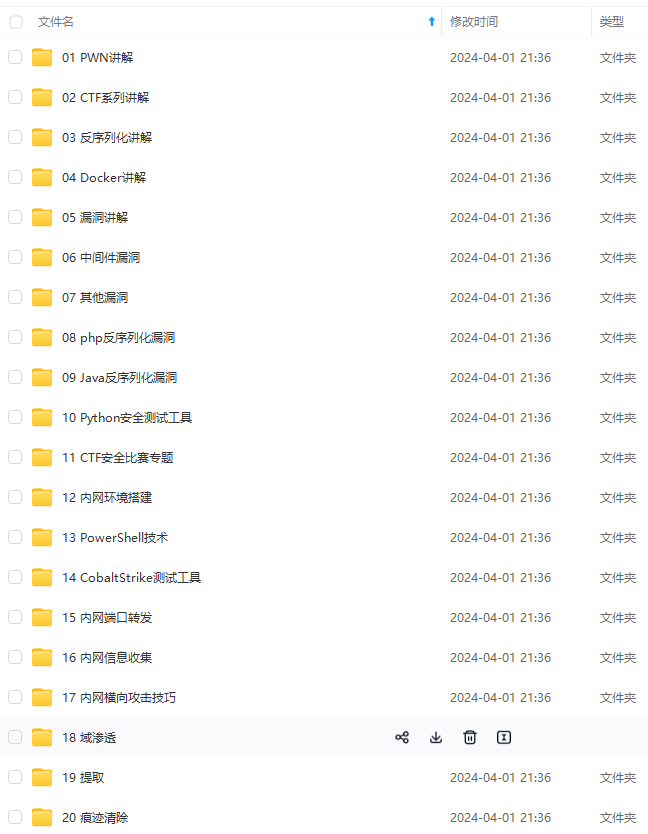

既有适合小白学习的零基础资料,也有适合3年以上经验的小伙伴深入学习提升的进阶课程,涵盖了95%以上网络安全知识点,真正体系化!
由于文件比较多,这里只是将部分目录截图出来,全套包含大厂面经、学习笔记、源码讲义、实战项目、大纲路线、讲解视频,并且后续会持续更新
如果你需要这些资料,可以添加V获取:vip204888 (备注网络安全)

正文
列混合将每一列的四个字节进行线性变换。

最后将加密后的矩阵转回字符串。

对密文进行解密并写入。

解密算法,先判断明文和密钥是否是16的倍数。

先进行轮密钥加,之后进行10轮解密,1-9轮解密包括逆行移位、逆字节代换、轮密钥加、逆列混合操作。
第10轮解密不包括逆列混合操作。

逆行移位

逆字节代换

逆列混合

2. AES用于加密各种文件(word、txt、mp3、jpg)的截图
txt文件明文

txt密文

txt解密文

Word明文

Word密文(无法正常打开)

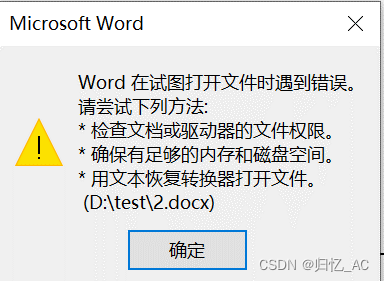
Word解密文

jpg明文

jpg密文(不可视)

jpg解密文

mp3明文(正常播放)

mp3密文(无法播放)

mp3解密文(正常播放)

3. 各种分组密码多种工作模式关键代码切图及简单介绍
密码分组链接模式(Cipher Block Chaining (CBC))
1.先将明文和上一组的密文进行XOR异或操作,然后再进行加密。
2.第一个数据块进行加密之前需要用初始化向量IV进行异或操作。
3.是一种最常用的加密模式。
4.优点是不容易主动攻击,安全性好于ECB,适合传输长度长的报文,是SSL、IPSec的标准。
5.缺点是加密是连续的,不能并行处理,并且与ECB一样消息块必须填充到块大小的整倍数。

加密算法

解密算法

计算器模式(Counter (CTR))
计算器模式不常见,在CTR模式中, 有一个自增的算子,这个算子用密钥加密之后的输出和明文异或的结果得到密文,相当于一次一密。这种加密方式简单快速,安全可靠,而且可以并行加密,但是在计算器不能维持很长的情况下,密钥只能使用一次。CTR的示意图如下所示:

加密算法

递归实现计数器加一

解密算法

实验结论
高级加密标准(AES, Advanced Encryption Standard)为最常见的对称加密算法,对称加密算法也就是加密和解密用相同的密钥。AES为分组密码,分组密码也就是把明文分成一组一组的,每组长度相等,每次加密一组数据,直到加密完整个明文。
分组密码有五种工作体制:1.电码本模式(Electronic Codebook Book (ECB));2.密码分组链接模式(Cipher Block Chaining (CBC));3.计算器模式(Counter (CTR));4.密码反馈模式(Cipher FeedBack (CFB));5.输出反馈模式(Output FeedBack (OFB))。
ECB(Electronic Codebook, 电子密码本)模式是最简单的加密模式,明文消息被分成固定大小的块(分组),并且每个块被单独加密。这种方法一旦有一个块被破解,使用相同的方法可以解密所有的明文数据,安全性比较差。可以进行并行计算,运行时间较短。加密前需要把明文数据填充到块大小的整倍数。
密码分组链接模式(Cipher Block Chaining (CBC))先将明文和上一组的密文进行XOR异或操作,然后再进行加密。第一个数据块进行加密之前需要用初始化向量IV进行异或操作。是一种最常用的加密模式。优点是不容易主动攻击,安全性好于ECB,适合传输长度长的报文,是SSL、IPSec的标准。缺点是加密是连续的,不能并行处理,并且与ECB一样消息块必须填充到块大小的整倍数。
计算器模式(Counter (CTR))不常见,在CTR模式中, 有一个自增的算子,这个算子用密钥加密之后的输出和明文异或的结果得到密文,相当于一次一密。这种加密方式简单快速,安全可靠,而且可以并行加密。
CFB(Cipher Feedback, 密码反馈)模式和CBC模式比较相似,前一个分组的密文加密后和当前分组的明文XOR异或操作生成当前分组的密文。CFB模式的解密和CBC模式的加密在流程上其实是非常相似的。优点:1.隐藏了明文模式;2.分组密码转化为流模式;3.可以及时加密传送小于分组的数据。缺点:1.不利于并行计算;2.误差传送:一个明文单元损坏影响多个单元;3.唯一的IV,导致安全性降低。
OFB(Output Feedback, 输出反馈)模式将分组密码转换为同步流密码,也就是说可以根据明文长度先独立生成相应长度的流密码。OFB和CFB非常相似,CFB是前一个分组的密文加密后XOR当前分组明文,OFB是前一个分组与前一个明文块异或之前的流密码XOR当前分组明文。由于异或操作的对称性,OFB模式的解密和加密完全一样的流程。优点:1.隐藏了明文模式;2.分组密码转化为流模式;3.可以及时加密传送小于分组的数据; 缺点:1.不利于并行计算;2.对明文的主动攻击是可能的;3.误差传送:一个明文单元损坏影响多个单元。
实验代码
aes.h
#ifndef MY_AES_H
#define MY_AES_H
/**
* 参数 p: 明文的字符串数组。
* 参数 plen: 明文的长度,长度必须为16的倍数。
* 参数 key: 密钥的字符串数组。
*/
void aes(char* p, int plen, char* key);
/**
* 参数 c: 密文的字符串数组。
* 参数 clen: 密文的长度,长度必须为16的倍数。
* 参数 key: 密钥的字符串数组。
*/
void deAes(char* c, int clen, char* key);
#endif
aes.cpp
#include <stdio.h>
#include <stdlib.h>
#include <string.h>
#include "aes.h"
/**
* S盒
*/
static const int S[16][16] = { 0x63, 0x7c, 0x77, 0x7b, 0xf2, 0x6b, 0x6f, 0xc5, 0x30, 0x01, 0x67, 0x2b, 0xfe, 0xd7, 0xab, 0x76,
0xca, 0x82, 0xc9, 0x7d, 0xfa, 0x59, 0x47, 0xf0, 0xad, 0xd4, 0xa2, 0xaf, 0x9c, 0xa4, 0x72, 0xc0,
0xb7, 0xfd, 0x93, 0x26, 0x36, 0x3f, 0xf7, 0xcc, 0x34, 0xa5, 0xe5, 0xf1, 0x71, 0xd8, 0x31, 0x15,
0x04, 0xc7, 0x23, 0xc3, 0x18, 0x96, 0x05, 0x9a, 0x07, 0x12, 0x80, 0xe2, 0xeb, 0x27, 0xb2, 0x75,
0x09, 0x83, 0x2c, 0x1a, 0x1b, 0x6e, 0x5a, 0xa0, 0x52, 0x3b, 0xd6, 0xb3, 0x29, 0xe3, 0x2f, 0x84,
0x53, 0xd1, 0x00, 0xed, 0x20, 0xfc, 0xb1, 0x5b, 0x6a, 0xcb, 0xbe, 0x39, 0x4a, 0x4c, 0x58, 0xcf,
0xd0, 0xef, 0xaa, 0xfb, 0x43, 0x4d, 0x33, 0x85, 0x45, 0xf9, 0x02, 0x7f, 0x50, 0x3c, 0x9f, 0xa8,
0x51, 0xa3, 0x40, 0x8f, 0x92, 0x9d, 0x38, 0xf5, 0xbc, 0xb6, 0xda, 0x21, 0x10, 0xff, 0xf3, 0xd2,
0xcd, 0x0c, 0x13, 0xec, 0x5f, 0x97, 0x44, 0x17, 0xc4, 0xa7, 0x7e, 0x3d, 0x64, 0x5d, 0x19, 0x73,
0x60, 0x81, 0x4f, 0xdc, 0x22, 0x2a, 0x90, 0x88, 0x46, 0xee, 0xb8, 0x14, 0xde, 0x5e, 0x0b, 0xdb,
0xe0, 0x32, 0x3a, 0x0a, 0x49, 0x06, 0x24, 0x5c, 0xc2, 0xd3, 0xac, 0x62, 0x91, 0x95, 0xe4, 0x79,
0xe7, 0xc8, 0x37, 0x6d, 0x8d, 0xd5, 0x4e, 0xa9, 0x6c, 0x56, 0xf4, 0xea, 0x65, 0x7a, 0xae, 0x08,
0xba, 0x78, 0x25, 0x2e, 0x1c, 0xa6, 0xb4, 0xc6, 0xe8, 0xdd, 0x74, 0x1f, 0x4b, 0xbd, 0x8b, 0x8a,
0x70, 0x3e, 0xb5, 0x66, 0x48, 0x03, 0xf6, 0x0e, 0x61, 0x35, 0x57, 0xb9, 0x86, 0xc1, 0x1d, 0x9e,
0xe1, 0xf8, 0x98, 0x11, 0x69, 0xd9, 0x8e, 0x94, 0x9b, 0x1e, 0x87, 0xe9, 0xce, 0x55, 0x28, 0xdf,
0x8c, 0xa1, 0x89, 0x0d, 0xbf, 0xe6, 0x42, 0x68, 0x41, 0x99, 0x2d, 0x0f, 0xb0, 0x54, 0xbb, 0x16 };
/**
* 逆S盒
*/
static const int S2[16][16] = { 0x52, 0x09, 0x6a, 0xd5, 0x30, 0x36, 0xa5, 0x38, 0xbf, 0x40, 0xa3, 0x9e, 0x81, 0xf3, 0xd7, 0xfb,
0x7c, 0xe3, 0x39, 0x82, 0x9b, 0x2f, 0xff, 0x87, 0x34, 0x8e, 0x43, 0x44, 0xc4, 0xde, 0xe9, 0xcb,
0x54, 0x7b, 0x94, 0x32, 0xa6, 0xc2, 0x23, 0x3d, 0xee, 0x4c, 0x95, 0x0b, 0x42, 0xfa, 0xc3, 0x4e,
0x08, 0x2e, 0xa1, 0x66, 0x28, 0xd9, 0x24, 0xb2, 0x76, 0x5b, 0xa2, 0x49, 0x6d, 0x8b, 0xd1, 0x25,
0x72, 0xf8, 0xf6, 0x64, 0x86, 0x68, 0x98, 0x16, 0xd4, 0xa4, 0x5c, 0xcc, 0x5d, 0x65, 0xb6, 0x92,
0x6c, 0x70, 0x48, 0x50, 0xfd, 0xed, 0xb9, 0xda, 0x5e, 0x15, 0x46, 0x57, 0xa7, 0x8d, 0x9d, 0x84,
0x90, 0xd8, 0xab, 0x00, 0x8c, 0xbc, 0xd3, 0x0a, 0xf7, 0xe4, 0x58, 0x05, 0xb8, 0xb3, 0x45, 0x06,
0xd0, 0x2c, 0x1e, 0x8f, 0xca, 0x3f, 0x0f, 0x02, 0xc1, 0xaf, 0xbd, 0x03, 0x01, 0x13, 0x8a, 0x6b,
0x3a, 0x91, 0x11, 0x41, 0x4f, 0x67, 0xdc, 0xea, 0x97, 0xf2, 0xcf, 0xce, 0xf0, 0xb4, 0xe6, 0x73,
0x96, 0xac, 0x74, 0x22, 0xe7, 0xad, 0x35, 0x85, 0xe2, 0xf9, 0x37, 0xe8, 0x1c, 0x75, 0xdf, 0x6e,
0x47, 0xf1, 0x1a, 0x71, 0x1d, 0x29, 0xc5, 0x89, 0x6f, 0xb7, 0x62, 0x0e, 0xaa, 0x18, 0xbe, 0x1b,
0xfc, 0x56, 0x3e, 0x4b, 0xc6, 0xd2, 0x79, 0x20, 0x9a, 0xdb, 0xc0, 0xfe, 0x78, 0xcd, 0x5a, 0xf4,
0x1f, 0xdd, 0xa8, 0x33, 0x88, 0x07, 0xc7, 0x31, 0xb1, 0x12, 0x10, 0x59, 0x27, 0x80, 0xec, 0x5f,
0x60, 0x51, 0x7f, 0xa9, 0x19, 0xb5, 0x4a, 0x0d, 0x2d, 0xe5, 0x7a, 0x9f, 0x93, 0xc9, 0x9c, 0xef,
0xa0, 0xe0, 0x3b, 0x4d, 0xae, 0x2a, 0xf5, 0xb0, 0xc8, 0xeb, 0xbb, 0x3c, 0x83, 0x53, 0x99, 0x61,
0x17, 0x2b, 0x04, 0x7e, 0xba, 0x77, 0xd6, 0x26, 0xe1, 0x69, 0x14, 0x63, 0x55, 0x21, 0x0c, 0x7d };
/**
* 获取整形数据的低8位的左4个位
*/
static int getLeft4Bit(int num) {
int left = num & 0x000000f0;
return left >> 4;
}
/**
* 获取整形数据的低8位的右4个位
*/
static int getRight4Bit(int num) {
return num & 0x0000000f;
}
/**
* 根据索引,从S盒中获得元素
*/
static int getNumFromSBox(int index) {
int row = getLeft4Bit(index);
int col = getRight4Bit(index);
return S[row][col];
}
/**
* 把一个字符转变成整型
*/
static int getIntFromChar(char c) {
int result = (int)c;
return result & 0x000000ff;
}
/**
* 把16个字符转变成4X4的数组,
* 该矩阵中字节的排列顺序为从上到下,
* 从左到右依次排列。
*/
static void convertToIntArray(char* str, int pa[4][4]) {
int k = 0;
int i, j;
for (i = 0; i < 4; i++)
for (j = 0; j < 4; j++) {
pa[j][i] = getIntFromChar(str[k]);
k++;
}
}
/**
* 打印4X4的数组
*/
static void printArray(int a[4][4]) {
int i, j;
for (i = 0; i < 4; i++) {
for (j = 0; j < 4; j++)
printf("a[%d][%d] = 0x%x ", i, j, a[i][j]);
printf("\n");
}
printf("\n");
}
/**
* 打印字符串的ASSCI,
* 以十六进制显示。
*/
static void printASSCI(char* str, int len) {
int i;
for (i = 0; i < len; i++)
printf("0x%x ", getIntFromChar(str[i]));
printf("\n");
}
/**
* 把连续的4个字符合并成一个4字节的整型
*/
static int getWordFromStr(char* str) {
int one, two, three, four;
one = getIntFromChar(str[0]);
one = one << 24;
two = getIntFromChar(str[1]);
two = two << 16;
three = getIntFromChar(str[2]);
three = three << 8;
four = getIntFromChar(str[3]);
return one | two | three | four;
}
/**
* 把一个4字节的数的第一、二、三、四个字节取出,
* 入进一个4个元素的整型数组里面。
*/
static void splitIntToArray(int num, int array[4]) {
int one, two, three;
one = num >> 24;
array[0] = one & 0x000000ff;
two = num >> 16;
array[1] = two & 0x000000ff;
three = num >> 8;
array[2] = three & 0x000000ff;
array[3] = num & 0x000000ff;
}
/**
* 将数组中的元素循环左移step位
*/
static void leftLoop4int(int array[4], int step) {
int temp[4];
int i;
int index;
for (i = 0; i < 4; i++)
temp[i] = array[i];
index = step % 4 == 0 ? 0 : step % 4;
for (i = 0; i < 4; i++) {
array[i] = temp[index];
index++;
index = index % 4;
}
}
/**
* 把数组中的第一、二、三和四元素分别作为
* 4字节整型的第一、二、三和四字节,合并成一个4字节整型
*/
static int mergeArrayToInt(int array[4]) {
int one = array[0] << 24;
int two = array[1] << 16;
int three = array[2] << 8;
int four = array[3];
return one | two | three | four;
}
/**
* 常量轮值表
*/
static const int Rcon[10] = { 0x01000000, 0x02000000,
0x04000000, 0x08000000,
0x10000000, 0x20000000,
0x40000000, 0x80000000,
0x1b000000, 0x36000000 };
/**
* 密钥扩展中的T函数
*/
static int T(int num, int round) {
int numArray[4];
int i;
int result;
splitIntToArray(num, numArray);
leftLoop4int(numArray, 1);//字循环
//字节代换
for (i = 0; i < 4; i++)
numArray[i] = getNumFromSBox(numArray[i]);
result = mergeArrayToInt(numArray);
return result ^ Rcon[round];
}
//密钥对应的扩展数组
static int w[44];
/**
* 打印W数组
*/
static void printW() {
int i, j;
for (i = 0, j = 1; i < 44; i++, j++) {
printf("w[%d] = 0x%x ", i, w[i]);
if (j % 4 == 0)
printf("\n");
}
printf("\n");
}
/**
* 扩展密钥,结果是把w[44]中的每个元素初始化
*/
static void extendKey(char* key) {
int i, j;
for (i = 0; i < 4; i++)
w[i] = getWordFromStr(key + i * 4);
for (i = 4, j = 0; i < 44; i++) {
if (i % 4 == 0) {
w[i] = w[i - 4] ^ T(w[i - 1], j);
j++;//下一轮
}
else {
w[i] = w[i - 4] ^ w[i - 1];
}
}
}
/**
* 轮密钥加
*/
static void addRoundKey(int array[4][4], int round) {
int warray[4];
int i, j;
for (i = 0; i < 4; i++) {
splitIntToArray(w[round * 4 + i], warray);
for (j = 0; j < 4; j++) {
array[j][i] = array[j][i] ^ warray[j];
}
}
}
/**
* 字节代换
*/
static void subBytes(int array[4][4]) {
int i, j;
for (i = 0; i < 4; i++)
for (j = 0; j < 4; j++)
array[i][j] = getNumFromSBox(array[i][j]);
}
/**
* 行移位
*/
static void shiftRows(int array[4][4]) {
int rowTwo[4], rowThree[4], rowFour[4];
int i;
for (i = 0; i < 4; i++) {
rowTwo[i] = array[1][i];
rowThree[i] = array[2][i];
rowFour[i] = array[3][i];
}
leftLoop4int(rowTwo, 1);
leftLoop4int(rowThree, 2);
leftLoop4int(rowFour, 3);
for (i = 0; i < 4; i++) {
array[1][i] = rowTwo[i];
array[2][i] = rowThree[i];
array[3][i] = rowFour[i];
}
}
/**
* 列混合要用到的矩阵
*/
static const int colM[4][4] = { 2, 3, 1, 1,
1, 2, 3, 1,
1, 1, 2, 3,
3, 1, 1, 2 };
static int GFMul2(int s) {
int result = s << 1;
int a7 = result & 0x00000100;
if (a7 != 0) {
result = result & 0x000000ff;
result = result ^ 0x1b;
}
return result;
}
static int GFMul3(int s) {
return GFMul2(s) ^ s;
}
static int GFMul4(int s) {
return GFMul2(GFMul2(s));
}
static int GFMul8(int s) {
return GFMul2(GFMul4(s));
}
static int GFMul9(int s) {
return GFMul8(s) ^ s;
}
static int GFMul11(int s) {
return GFMul9(s) ^ GFMul2(s);
}
static int GFMul12(int s) {
return GFMul8(s) ^ GFMul4(s);
}
static int GFMul13(int s) {
return GFMul12(s) ^ s;
}
static int GFMul14(int s) {
return GFMul12(s) ^ GFMul2(s);
}
/**
* GF上的二元运算
*/
static int GFMul(int n, int s) {
int result;
if (n == 1)
result = s;
else if (n == 2)
result = GFMul2(s);
else if (n == 3)
result = GFMul3(s);
else if (n == 0x9)
result = GFMul9(s);
else if (n == 0xb)//11
result = GFMul11(s);
else if (n == 0xd)//13
result = GFMul13(s);
else if (n == 0xe)//14
result = GFMul14(s);
return result;
}
/**
* 列混合
*/
static void mixColumns(int array[4][4]) {
int tempArray[4][4];
int i, j;
for (i = 0; i < 4; i++)
for (j = 0; j < 4; j++)
tempArray[i][j] = array[i][j];
for (i = 0; i < 4; i++)
for (j = 0; j < 4; j++) {
array[i][j] = GFMul(colM[i][0], tempArray[0][j]) ^ GFMul(colM[i][1], tempArray[1][j])
^ GFMul(colM[i][2], tempArray[2][j]) ^ GFMul(colM[i][3], tempArray[3][j]);
}
}
/**
* 把4X4数组转回字符串
*/
static void convertArrayToStr(int array[4][4], char* str) {
int i, j;
for (i = 0; i < 4; i++)
for (j = 0; j < 4; j++)
*str++ = (char)array[j][i];
}
/**
* 检查密钥长度
*/
static int checkKeyLen(int len) {
if (len == 16)
return 1;
else
return 0;
}
/**
* 参数 p: 明文的字符串数组。
* 参数 plen: 明文的长度。
* 参数 key: 密钥的字符串数组。
*/
void aes(char* p, int plen, char* key) {
int keylen = strlen(key);
int pArray[4][4];
int k, i;
if (plen == 0 || plen % 16 != 0) {
printf("明文字符长度必须为16的倍数!\n");
exit(0);
}
if (!checkKeyLen(keylen)) {
printf("密钥字符长度错误!长度必须为16。当前长度为%d\n", keylen);
exit(0);
}
extendKey(key);//扩展密钥
for (k = 0; k < plen; k += 16) //一个一个矩阵进行加密
{
convertToIntArray(p + k, pArray);
addRoundKey(pArray, 0);//一开始的轮密钥加
for (i = 1; i < 10; i++) {
subBytes(pArray);//字节代换
shiftRows(pArray);//行移位
mixColumns(pArray);//列混合
addRoundKey(pArray, i);
}
subBytes(pArray);//字节代换
shiftRows(pArray);//行移位
addRoundKey(pArray, 10);//轮密钥加
convertArrayToStr(pArray, p + k);//转回字符串
}
}
/**
* 根据索引从逆S盒中获取值
*/
static int getNumFromS1Box(int index) {
int row = getLeft4Bit(index);
int col = getRight4Bit(index);
return S2[row][col];
}
/**
* 逆字节代换
*/
static void deSubBytes(int array[4][4]) {
int i, j;
for (i = 0; i < 4; i++)
for (j = 0; j < 4; j++)
array[i][j] = getNumFromS1Box(array[i][j]);
}
/**
* 把4个元素的数组循环右移step位
*/
static void rightLoop4int(int array[4], int step) {
int temp[4];
int i;
int index;
for (i = 0; i < 4; i++)
temp[i] = array[i];
index = step % 4 == 0 ? 0 : step % 4;
index = 3 - index;
for (i = 3; i >= 0; i--) {
array[i] = temp[index];
index--;
index = index == -1 ? 3 : index;
}
}
/**
* 逆行移位
*/
static void deShiftRows(int array[4][4]) {
int rowTwo[4], rowThree[4], rowFour[4];
int i;
for (i = 0; i < 4; i++) {
rowTwo[i] = array[1][i];
rowThree[i] = array[2][i];
rowFour[i] = array[3][i];
}
rightLoop4int(rowTwo, 1);
rightLoop4int(rowThree, 2);
rightLoop4int(rowFour, 3);
for (i = 0; i < 4; i++) {
array[1][i] = rowTwo[i];
array[2][i] = rowThree[i];
array[3][i] = rowFour[i];
}
}
/**
* 逆列混合用到的矩阵
*/
static const int deColM[4][4] = { 0xe, 0xb, 0xd, 0x9,
0x9, 0xe, 0xb, 0xd,
0xd, 0x9, 0xe, 0xb,
0xb, 0xd, 0x9, 0xe };
/**
* 逆列混合
*/
static void deMixColumns(int array[4][4]) {
int tempArray[4][4];
int i, j;
for (i = 0; i < 4; i++)
for (j = 0; j < 4; j++)
tempArray[i][j] = array[i][j];
for (i = 0; i < 4; i++)
for (j = 0; j < 4; j++) {
### 给大家的福利
**零基础入门**
对于从来没有接触过网络安全的同学,我们帮你准备了详细的学习成长路线图。可以说是最科学最系统的学习路线,大家跟着这个大的方向学习准没问题。
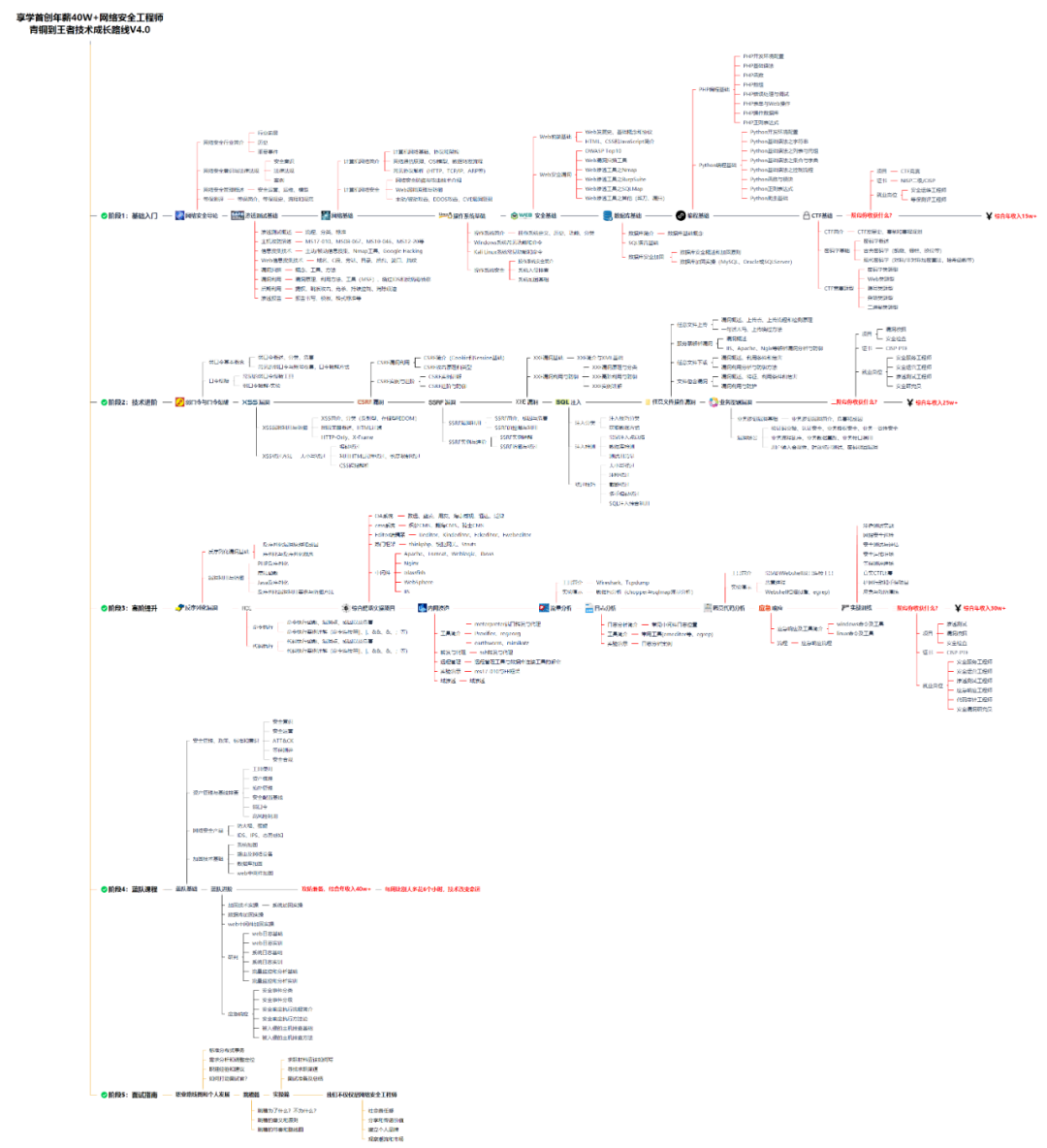
同时每个成长路线对应的板块都有配套的视频提供:

因篇幅有限,仅展示部分资料
网络安全面试题

绿盟护网行动
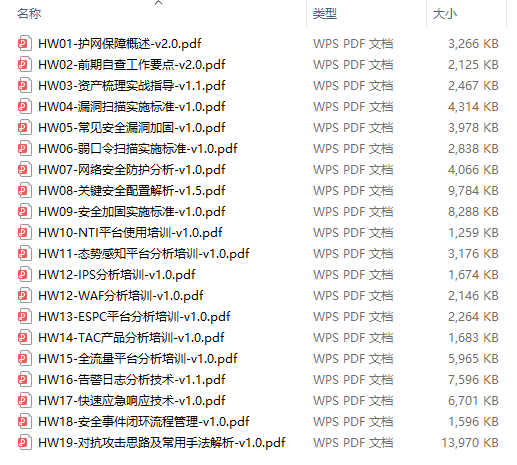
还有大家最喜欢的黑客技术
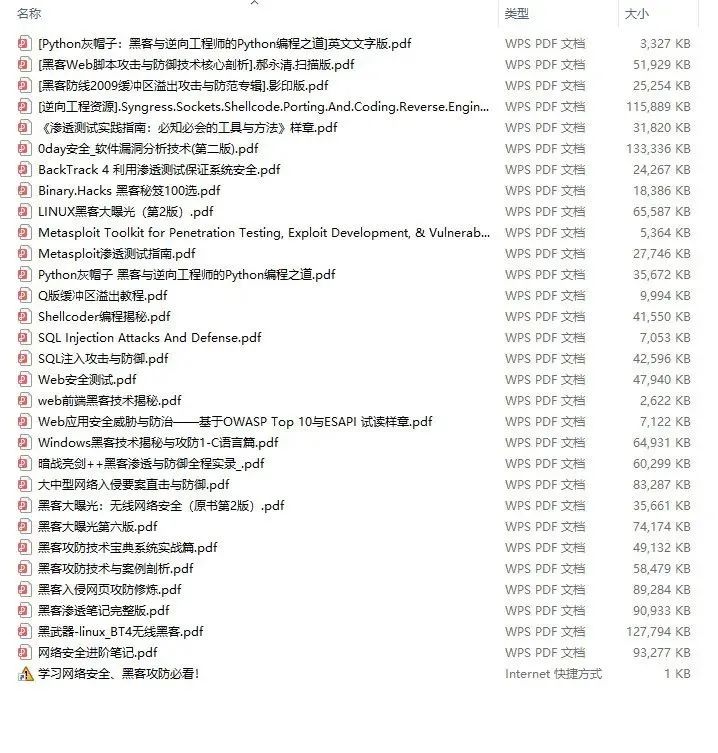
**网络安全源码合集+工具包**

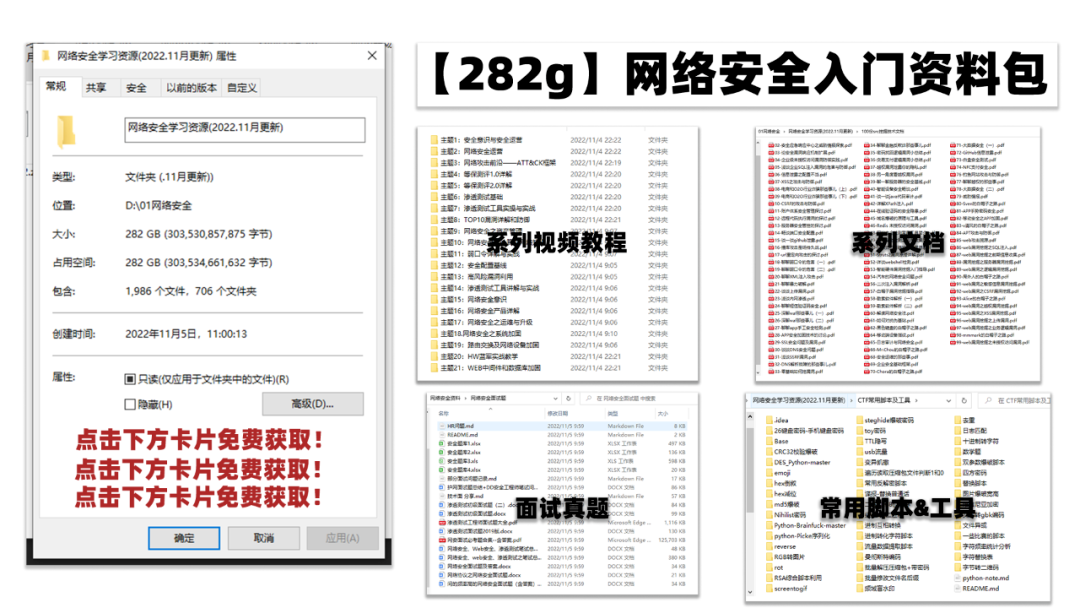
**所有资料共282G**,朋友们如果有需要全套《网络安全入门+黑客进阶学习资源包》,可以扫描下方二维码领取(如遇扫码问题,可以在评论区留言领取哦)~
**网上学习资料一大堆,但如果学到的知识不成体系,遇到问题时只是浅尝辄止,不再深入研究,那么很难做到真正的技术提升。**
**需要这份系统化的资料的朋友,可以添加V获取:vip204888 (备注网络安全)**

**一个人可以走的很快,但一群人才能走的更远!不论你是正从事IT行业的老鸟或是对IT行业感兴趣的新人,都欢迎加入我们的的圈子(技术交流、学习资源、职场吐槽、大厂内推、面试辅导),让我们一起学习成长!**
91b9e8100834e9291cfcf1695d8cd42.png#pic_center)
因篇幅有限,仅展示部分资料
网络安全面试题

绿盟护网行动

还有大家最喜欢的黑客技术

**网络安全源码合集+工具包**


**所有资料共282G**,朋友们如果有需要全套《网络安全入门+黑客进阶学习资源包》,可以扫描下方二维码领取(如遇扫码问题,可以在评论区留言领取哦)~
**网上学习资料一大堆,但如果学到的知识不成体系,遇到问题时只是浅尝辄止,不再深入研究,那么很难做到真正的技术提升。**
**需要这份系统化的资料的朋友,可以添加V获取:vip204888 (备注网络安全)**
[外链图片转存中...(img-Vf6zBTfq-1713206309096)]
**一个人可以走的很快,但一群人才能走的更远!不论你是正从事IT行业的老鸟或是对IT行业感兴趣的新人,都欢迎加入我们的的圈子(技术交流、学习资源、职场吐槽、大厂内推、面试辅导),让我们一起学习成长!**





















 1万+
1万+











 被折叠的 条评论
为什么被折叠?
被折叠的 条评论
为什么被折叠?








